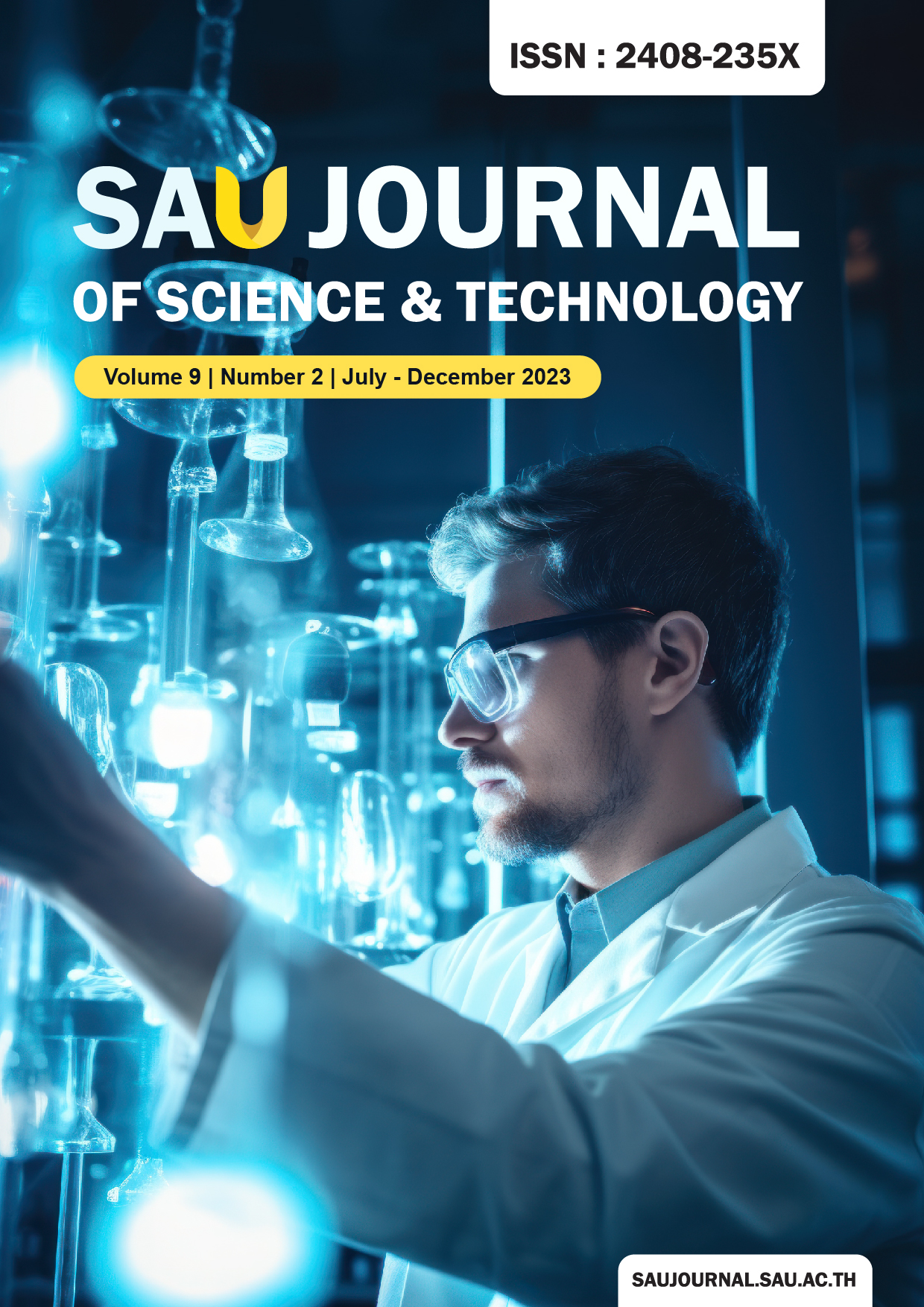MACHINE LEARNING BASED PREDICTION ANALYSIS FOR THE SERVICE LEVEL AGREEMENT: A CASE STUDY OF DHANARAK ASSET DEVELOPMENT CO., LTD.
Main Article Content
Abstract
The purpose of this research is to analyze and compare the efficiency of the prediction models for the success of the service level agreement of Dhanarak Asset Development Co., Ltd by using building management system data. The researcher has used five techniques, including support vector machines, decision tree, k-nearest neighbor, perceptron and Adaboost algorithms to create 5 classification models and compare the performance of success prediction among those 5 different models. The results showed that Adaboot Algorithm gave the highest accuracy of 69%, support vector machine and decision tree equally yielded 67% accuracy, while the nearest neighbor and perceptron provided 66% and the 56% accuracies, respectively. Although the evaluating results of the five forecasting models gave a not very high accuracies, the forecasting models can actually be used in business by considering other factors, such as, risk analysis in preparing spare equipment for repairs, analysis of building deterioration, preparation of various resources in order to determine work plans to be successful according to service level agreements.
Article Details
References
S. Junlabuddee, "Customer Relationship Management with Data Mining", Journal of library & information science, Khon Kaen University, Vol. 25, No. 1-3, pp.64-75, Jan-Dec.2007 (in Thai)
P. Bunprasert, "Housing-Loan Classification system using Machine Learning Model", Independent Study, Dhurakij Pundit Univ., 2021. (in Thai)
K. Dechtongkam, “Importance of Service Quality to Tourism Business’s Success under COVID-19 Situation,” Journal of Sports Science and Health, Vol.21, No.3, pp.317-326, Sep.-Dec. 2020 (in Thai)
W. Lalitchaiwasin, I. Tanphan and C. Visitnitikija, "The Service Quality of Juristic Persons in Primo Management of Condominium Co., Ltd., "Narkbhutparitat Journal Nakhon Si Thammarat Rajabhat University, vol. 13, no.3, pp.182-193, Sep.-Dec. 2021. (in Thai)
M. Yawongsa, "An Evaluation of Users' Satisfaction of office Building in Bangkok Central Business District Area," Independent Study, Thummasat Univ., 2017. (in Thai)
A. Phouthongsa, S. Rakkran, B. Chaichannawatik, "Complaints and Satisfaction Management of the Condominium Juristic person in case study of high - class condominiums in the Bangkok area," Journal of Science and Technology, Sukhothai Thammathirat Open University: Vol.1 No.2, pp.82-91, Jul.-Dec., 2021. (in Thai)
P. Khewkon, "Applying ITIL Framework to Service Desk," Independent Study, Mahanakorn Univ., 2016. (in Thai)
S. Chansakul, “Data Mining Techniques for Nursing Data Analysis,” EAU Heritage Journal Science and Technology, Vol. 12, No. 2, pp.83-96, May-August. 2018 (in Thai)
S. Pattanawongprakarn, "An analysis of classification techniques a case study of class preduction for construction projects," M.S. Thesis, Thammasat Univ., 2020. (in Thai)
K. Nasritha, J. Thongkum and W. Sukmak, “A Robust Hybrid Classifi cation Method Analysis”, Journal of Science and Technology, Mahasarakham University, Vol. 33, No. 6, pp.561-570, Nov.-Dec.2014 (in Thai)
R. Bunma and N. Jirawichitchai, “Classification of Diabetes Patient by Using Data Mining Techniques and Correlation Based Feature Selection”, PKRU SciTech Journal, Phuket Rajabhat University, Vol. 3, No. 2, pp.11-19, Jul.-Dec.2019 (in Thai)
Datacamp. (2019, Dec. 15). “Support Vector Machines with Scikit-learn Tutorial” [Online]. Available: https://www.datacamp.com/tutorial/svm-classification-scikit-learn-python
N. Janchum and C. Cheewaviriyanon. “Using Data Mining Techniques to Develop a Model for Scratch Programming Assessment”, Information Technology Journal, King Mongkut's University of Technology North Bangkok, Vol. 18, No. 1, pp.96-105, Jan.-Jun.2022 (in Thai)
C. Knight. (2021, Feb. 2). “The Basics of Graphs and Trees” [Online]. Available: https://williamchknight medium.com/the-basics-of-graphs-and-trees-f5f5ebbdfeee
S. Dande. (2021, Oct. 20). “K — nearest neighbor (KNN) Algorithm & its metrics” [Online]. Available: http://medium.com/@sravanthi.dande/k-nearest-neighbor-knn-algorithm-its-metrics-42c3f196fdda
L. Camuñas-Mesa, B. Linares-Barranco and T. Serrano -Gotarredona. (2019, Aug. 27). “Neuromorphic Spiking Neural Networks and Their Memristor-CMOS Hardware Implementations” [Online]. Available: https://www.mdpi.com/1996-1944/12/17/2745
K. Siriket, “The Moods of The Lyrics in The Future for Business”, Independent Study, Srinakharinwirot Univ.,2020. (in Thai)
P. Chapman, J. Clinton, R. Kerber, T. Khabaza, T. Reinartzrysler, C. Shearer and R. Wirth, The CRISP-DM user guide. Paper presented at 4th CRISP-DM sig workshop in Brussels in march, 1999.
Cway investment. (2018, Oct. 06). “Adaptive Boosting Algorithm” [Online]. Available: https://medium.com/cw-quantlab/adaptive-boosting-algorithm-a761f0a0b264


